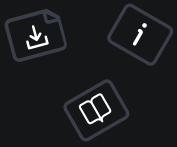HTML Views and Templates
Overview
Flight provides some basic HTML templating functionality by default. Templating is a very effective way for you to disconnect your application logic from your presentation layer.
Understanding
When you are building an application, you'll likely have HTML that you'll want to deliver back to the end user. PHP by itself is a templating language, but it is very easy to wrap up business logic like database calls, API calls, etc into your HTML file and make testing and decoupling a very difficult process. By pushing data into a template and letting the template render itself, it becomes much easier to decouple and unit test your code. You will thank us if you use templates!
Basic Usage
Flight allows you to swap out the default view engine simply by registering your own view class. Scroll down to see examples of how to use Smarty, Latte, Blade, and more!
Latte
recommended
Here's how you would use the Latte template engine for your views.
Installation
composer require latte/latteBasic Configuration
The main idea is that you overwrite the render method to use Latte instead of the default PHP renderer.
// overwrite the render method to use latte instead of the default PHP renderer
Flight::map('render', function(string $template, array $data, ?string $block): void {
$latte = new Latte\Engine;
// Where latte specifically stores its cache
$latte->setTempDirectory(__DIR__ . '/../cache/');
$finalPath = Flight::get('flight.views.path') . $template;
$latte->render($finalPath, $data, $block);
});Using Latte in Flight
Now that you can render with Latte, you can do something like this:
<!-- app/views/home.latte -->
<html>
<head>
<title>{$title ? $title . ' - '}My App</title>
<link rel="stylesheet" href="style.css">
</head>
<body>
<h1>Hello, {$name}!</h1>
</body>
</html>// routes.php
Flight::route('/@name', function ($name) {
Flight::render('home.latte', [
'title' => 'Home Page',
'name' => $name
]);
});When you visit /Bob in your browser, the output would be:
<html>
<head>
<title>Home Page - My App</title>
<link rel="stylesheet" href="style.css">
</head>
<body>
<h1>Hello, Bob!</h1>
</body>
</html>Further Reading
A more complex example of using Latte with layouts is shown in the awesome plugins section of this documentation.
You can learn more about Latte's full capabilities including translation and language capabilities by reading the official documentation.
Built-in View Engine
deprecated
Note: While this is still the default functionality and still technically works.
To display a view template call the render method with the name
of the template file and optional template data:
Flight::render('hello.php', ['name' => 'Bob']);The template data you pass in is automatically injected into the template and can
be reference like a local variable. Template files are simply PHP files. If the
content of the hello.php template file is:
Hello, <?= $name ?>!The output would be:
Hello, Bob!You can also manually set view variables by using the set method:
Flight::view()->set('name', 'Bob');The variable name is now available across all your views. So you can simply do:
Flight::render('hello');Note that when specifying the name of the template in the render method, you can
leave out the .php extension.
By default Flight will look for a views directory for template files. You can
set an alternate path for your templates by setting the following config:
Flight::set('flight.views.path', '/path/to/views');Layouts
It is common for websites to have a single layout template file with interchanging
content. To render content to be used in a layout, you can pass in an optional
parameter to the render method.
Flight::render('header', ['heading' => 'Hello'], 'headerContent');
Flight::render('body', ['body' => 'World'], 'bodyContent');Your view will then have saved variables called headerContent and bodyContent.
You can then render your layout by doing:
Flight::render('layout', ['title' => 'Home Page']);If the template files looks like this:
header.php:
<h1><?= $heading ?></h1>body.php:
<div><?= $body ?></div>layout.php:
<html>
<head>
<title><?= $title ?></title>
</head>
<body>
<?= $headerContent ?>
<?= $bodyContent ?>
</body>
</html>The output would be:
<html>
<head>
<title>Home Page</title>
</head>
<body>
<h1>Hello</h1>
<div>World</div>
</body>
</html>Smarty
Here's how you would use the Smarty template engine for your views:
// Load Smarty library
require './Smarty/libs/Smarty.class.php';
// Register Smarty as the view class
// Also pass a callback function to configure Smarty on load
Flight::register('view', Smarty::class, [], function (Smarty $smarty) {
$smarty->setTemplateDir('./templates/');
$smarty->setCompileDir('./templates_c/');
$smarty->setConfigDir('./config/');
$smarty->setCacheDir('./cache/');
});
// Assign template data
Flight::view()->assign('name', 'Bob');
// Display the template
Flight::view()->display('hello.tpl');For completeness, you should also override Flight's default render method:
Flight::map('render', function(string $template, array $data): void {
Flight::view()->assign($data);
Flight::view()->display($template);
});Blade
Here's how you would use the Blade template engine for your views:
First, you need to install the BladeOne library via Composer:
composer require eftec/bladeoneThen, you can configure BladeOne as the view class in Flight:
<?php
// Load BladeOne library
use eftec\bladeone\BladeOne;
// Register BladeOne as the view class
// Also pass a callback function to configure BladeOne on load
Flight::register('view', BladeOne::class, [], function (BladeOne $blade) {
$views = __DIR__ . '/../views';
$cache = __DIR__ . '/../cache';
$blade->setPath($views);
$blade->setCompiledPath($cache);
});
// Assign template data
Flight::view()->share('name', 'Bob');
// Display the template
echo Flight::view()->run('hello', []);For completeness, you should also override Flight's default render method:
<?php
Flight::map('render', function(string $template, array $data): void {
echo Flight::view()->run($template, $data);
});In this example, the hello.blade.php template file might look like this:
<?php
Hello, {{ $name }}!The output would be:
Hello, Bob!See Also
- Extending - How to overwrite the
rendermethod to use a different template engine. - Routing - How to map routes to controllers and render views.
- Responses - How to customize HTTP responses.
- Why a Framework? - How templates fit into the big picture.
Troubleshooting
- If you have a redirect in your middleware, but your app doesn't seem to be redirecting, make sure you add an
exit;statement in your middleware.
Changelog
- v2.0 - Initial release.



